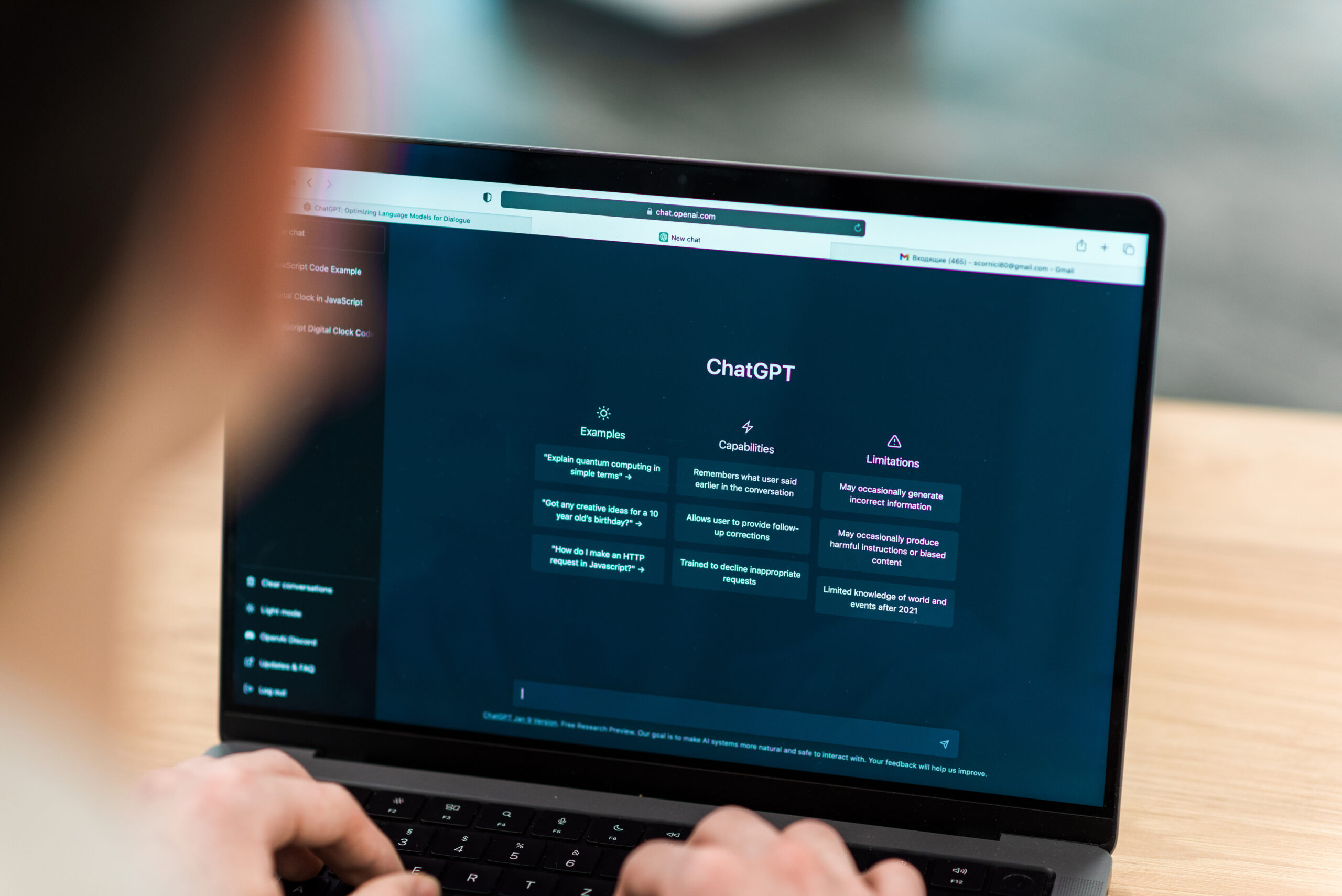Prompt Library for Beginners

Introduction
ChatGPT can help with everything from writing and studying to daily life hacks, but beginners often don’t know what to ask. On Reddit, newcomers frequently ask what ChatGPT can actually do, and more experienced users respond by pointing them to long lists of example prompts. Learning to use ChatGPT well is a skill: poorly crafted prompts often lead to generic or confusing answers. Common mistakes include being too vague, cramming multiple requests into one question, omitting context or examples, ignoring model limits, failing to iterate on responses, and using unstructured, run-on instructions. Articles aimed at beginners also warn that ChatGPT’s outputs can be messy; asking the model to extract key facts often results in a long, rambling paragraph. Prompt engineering guides recommend providing clear context and examples, assigning the AI a role (e.g., “act as a UX designer”), iterating on its responses, and specifying the desired format. Understanding these principles helps beginners avoid frustration and unlock ChatGPT’s versatility.
Common mistakes include being too vague, cramming multiple requests into one question, omitting context or examples, ignoring model limits, failing to iterate on responses, and using unstructured, run-on instructions..
Common Beginner Struggles and How to Solve Them
| Struggle | Evidence & Explanation | How to Address It |
|---|---|---|
| Vague prompts | Broad questions like “write something about climate change” force the model to guess your intent, producing generic responses. | Be specific about length, audience, tone, and details. For example, request a 500-word explanation focusing on coral reefs for a teenage audience. |
| Overloading tasks | Cramming multiple requests into one prompt splits limited context and yields shallow or disorganized answers. | Break complex tasks into separate prompts. Ask for a product description first, then summarize it, then translate it. |
| Missing context | Without background information, the model falls back on generalities and may miss your situation. | Provide relevant background, sample text or code, and explain what you care about. |
| No examples | Examples clarify expectations for style and quality; few-shot prompting improves results. | Include sample outputs or tone/style examples when asking for writing or translations. |
| Ignoring AI limitations | The model has a knowledge cutoff and no live data; some tasks are unsuitable. | Ask for explanations or process guidance instead of real-time facts, and verify important information. |
| Not iterating | Expecting perfection in one try leads to disappointment. | Treat the chat like a draft—give feedback on what’s missing and refine the prompt. |
| Poor formatting | Long, unstructured instructions are hard to parse. | Use numbered/bulleted lists, separate tasks clearly, and specify the desired output format. |
| Skipping role assignment | Assigning a role narrows scope and improves relevance. | Start with “Act as a senior UX designer…” (or other expert) to guide the response. |
| Lack of structured output | Asking for “key facts” often returns a dense paragraph. | Request tables, lists, or JSON and specify field names and structure. |
| Ignoring feedback and limits | Blindly trusting outputs can spread errors. | Use AI as a collaborator, cross-check facts, and iterate if the response is off. |


Top 10 Starter Prompts
- Explain [topic] as if I were 10 years old.
Simplifies complicated subjects with child-friendly language. - Summarize this text in 3 bullet points: [paste text].
Condenses a long passage into key takeaways. - Give me 5 creative ways to practise [skill] in 10 minutes a day.
Provides micro-learning ideas. - Act as my tutor. Ask me questions about [topic] until I understand it.
Enables adaptive, question-led learning. - Rewrite this email in three styles: friendly, professional and persuasive.
Offers tone variations for different audiences. - Give me a weekly meal plan for a [vegetarian/family/keto] diet.
Produces a balanced plan with recipes and a shopping list. - Suggest 10 ideas for a side hustle I can start with €100.
Brainstorms budget-friendly ideas. - Take the role of a [coach/therapist/mentor] and ask me reflective questions about my goals.
Guides self-assessment. - Create a study schedule for me based on these deadlines: [list deadlines].
Breaks work into a manageable timetable. - Give me a checklist to prepare for [event/interview/exam/trip].
Ensures nothing gets forgotten.
🧑🎓 Learning & Studying
-
Explain [academic concept] using an analogy related to [familiar topic].
-
Create a mnemonic to remember [list of facts].
-
Ask me multiple-choice questions about [subject] and tell me the correct answer after I respond.
-
Break down [complex process] into clear, numbered steps; include a brief explanation of each.
-
Generate 5 research project ideas about [subject] suitable for [grade level] students.
-
Act as a flashcard generator. Produce Q–A pairs for [topic] spaced for revision.
-
Turn this list of facts into a short poem or story so I can remember them.
-
Pretend you are my study partner; ask me to teach you [concept] and correct my explanation.
✍️ Writing & Creativity
- Brainstorm 10 plot ideas for a [genre] story set in [setting].
- Write a paragraph describing [scene] in the style of [genre] or [writer].
- Generate a character profile for a [occupation] in a [genre] story, including motivations and flaws.
- Rewrite this paragraph using vivid sensory details and metaphors.
- Provide an outline for an article about [topic] with [number] sections and key points.
- Compose a haiku about [subject].
- Write a dialogue between [two figures] discussing [modern issue].
- Act as an idea machine: ask me for a noun, then generate a prompt using it.
- Turn this summary into a 30-second script for a TikTok video, including narration and suggested visuals.
📅 Productivity & Organization
-
Prioritize this to-do list by urgency and importance: [list items].
-
Create a daily schedule with time blocks for [tasks] and breaks.
-
Suggest a morning routine that boosts productivity and well-being.
-
Break down [project] into milestones with deadlines and resources.
-
Help me declutter my digital workspace; provide a checklist for emails, files and apps.
-
Act as a decision-making coach: ask clarifying questions, then help me choose between [A] and [B].
-
Generate a weekly cleaning schedule for a two-bedroom apartment.
-
Coach me using the Pomodoro technique for a 4-hour session.
-
Create a minimalistic packing list for a five-day trip to [location] in [season].
💼 Business & Marketing
-
Develop a SWOT analysis for a [business type] entering the [market].
-
Write a 30-second elevator pitch for [company description].
-
Generate 5 unique value propositions for a [product/service] targeting [audience].
-
Act as a brand voice coach; rewrite this caption to sound [tone].
-
Brainstorm 10 low-cost marketing campaign ideas to promote [product] online.
-
Create a month-long content calendar about [topic] (post type + key message).
-
Suggest a pricing strategy for a subscription offering [features].
-
Role-play as a dissatisfied customer; let me practise responding about [issue].
-
Translate this product description into [language] while preserving brand voice.
👩💻 Coding & Tech Help
-
Explain [programming concept] using simple terms and an analogy.
-
Write a simple program in [language] that [task] and explain each line.
-
Identify errors in this code and suggest corrections: [paste code].
-
Teach me how to use [tool/library]; outline setup and a basic example.
-
Compare [two algorithms/technologies]; list pros and cons.
-
Generate unit tests for the following function: [function code].
-
Act as a coding interviewer; ask a [level] question and evaluate my answer.
-
Suggest five beginner project ideas to practise [language].
-
Explain the differences between [paradigms/tech], with example code.
🍳 Daily Life (Recipes, Hobbies, Travel & Parenting)
-
Create a balanced weekly meal plan for two adults and two kids, with recipes and a grocery list.
-
Suggest five indoor activities to keep a toddler entertained on a rainy day.
-
Plan a weekend itinerary for [city], including free and paid attractions.
-
Give a step-by-step guide to start [hobby], including materials and tips.
-
Convert this leftover list into a creative dinner recipe: [ingredients].
-
Provide a no-equipment home fitness routine with beginner modifications.
-
Suggest 10 engaging dinner-party conversation starters.
-
Write a five-minute bedtime story about [character] for a [age]-year-old.
-
List essentials for a newborn checklist, grouped by category.
🎭 Fun & Role-play
-
Act as a famous detective solving a mystery about [topic]; be dramatic.
-
You are a stand-up comedian; deliver a short routine about [topic].
-
Role-play a travel guide from 1850 describing a journey to [destination].
-
Debate me as if you completely disagree with my opinion on [topic]; give three arguments.
-
Rewrite a boring paragraph as if written by Shakespeare.
-
Be my brainstorming partner; ask only questions to develop [project].
-
Act as an alien anthropologist describing a mundane human activity.
-
Turn my daily routine into a dramatic movie trailer.
-
Let’s play a choose-your-own-adventure: describe a fantasy world and offer two choices.
⚡ Advanced Beginner
-
Provide your answer as a table with two columns; column 1: [item], column 2: [related item].
-
Explain [concept] using JSON with keys:
definition,example,key_takeaway. -
Stay in the role of a [persona] until I say “stop.” Do not break character.
-
For every response, also suggest one related idea I might not have considered.
-
Summarize this article in YAML with fields:
summary,key_points(list),recommended_actions. -
Answer in exactly three sentences—no more, no less.
-
When solving a problem, think step-by-step and number each step.
-
Generate the same response in two formats: a concise bullet list and a narrative paragraph.
-
Create a mind-map description with nested bullet points for [complex topic].
Beginners often struggle with vague instructions, overloaded prompts, and lack of structure.
Conclusion
ChatGPT is a versatile tool capable of drafting emails, generating marketing strategies, explaining scientific concepts, or entertaining you with historical role-play. Beginners often struggle with vague instructions, overloaded prompts, and lack of structure. By being specific, providing context and examples, assigning roles, and iteratively refining prompts, you can harness the full power of ChatGPT. The prompts above balance everyday tasks with creative challenges, giving new users a practical and fun way to explore what it can do.
Related Articles
Write work emails ChatGPT Prompt
Write a quick informal email to [name] and say [write all you want to say in the email]
The Age of AI in Video Manipulation: A Look at Advanced Tools
In the ever-evolving world of digital technology, a new tool has emerged that's pushing the boundaries of what we thought possible in the realm of facial manipulation. It's called 'Unboring', and its capabilities are as intriguing as they are unsettling. How Unboring...
AI in Medicine: Beyond Writing, It’s a Lifesaver
While Artificial Intelligence (AI) is often celebrated for automating tasks, enhancing productivity, or even crafting a crisp blog post, its potential stretches far beyond these realms. In fact, the true power of AI lies in its potential to transform industries and...





0 Comments